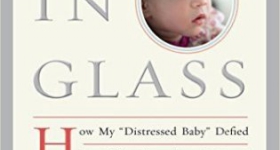When I was a 19-year-old undergraduate majoring in East Asian
studies, I read a translation of the classical Chinese masterpiece The Story of the Stone (also known as Dream of the Red Chamber), by Cao Xueqin.
The complete novel fills five volumes, and I was assigned to read only volume
one, but I was so taken by the story and characters that I continued the read
the subsequent volumes. I was sucked into the epic tale of the 18th
century Jia family, whose operatic story was a complicated web of love
triangles, ambition, filial piety, rebellion, and betrayal. It’s the stuff of
great drama.
To my mind, it is no small feat for an author to re-imagine
and translate the world of The Story of
the Stone for a Western audience. This is the task Pauline Chen set herself in writing her novel, The Red
Chamber. Readers are informed in an author’s note that The Red Chamber is “inspired” by Cao Xueqin’s original classic,
rather than a faithful re-telling of the epic novel.
The original novel centers
around the character of Jia Baoyu, an adolescent male heir of a wealthy
aristocratic family in 18th century China. Jia Baoyu was born with a
jade in his mouth, a sign that causes his family to believe him chosen by the
gods. Baoyu lives in his family’s extensive compound, Rongguo Mansion, cloistered
in an inner garden with his female cousins and flirtatious maids, an
arrangement that would have been considered inappropriate, but is allowed by
Baoyu’s grandmother because of his jade.
At the opening of The
Red Chamber, Jia Baoyu is 18 years old and has yet to pass the Imperial
Examination, despite his promise of greatness. He is more worldly than in Cao
Xueqin’s original, leaving Rongguo Mansion to attend school and parties with
other prominent political families. In the original novel, Baoyu comes across
as immature, effeminate, and clownish. In The
Red Chamber, Baoyu has morphed into a metrosexual stud muffin.
Jia Baoyu plays a less prominent role in The Red Chamber than three female
characters who circle around him. Lin Daiyu, a cousin related to Baoyu on his
father’s side, arrives at Rongguo Mansion after her mother passes away in the
South, where she and her father lived a modest scholar’s life. Daiyu is as
well-educated as a boy of this time period, passionate and a romantic at heart.
Baoyu is instantly smitten with her.
Xue Baochai, a cousin related to Baoyu on his mother’s side,
has been living at Rongguo for a few years. She is sensible and level-headed,
cool and implacable. Growing up with Baoyu, they share a flirtatious,
affectionate relationship. Their parents have long joked of betrothing Baochai
to Baoyu, an unspoken arrangement which is fraught with tension when Daiyu
arrives on the scene. Evidently, kissing cousins were the norm during the Qing
Dynasty.
Wang Xifeng -- the third central female character -- is
married to Baoyu’s elder male cousin, Jia Lian. Only a few years older than
Baoyu and his female cousins, Xifeng assumes the senior daughter-in-law
position of running the household and runs Rongguo with great efficiency. Shrewd
and cunning, Xifeng is forced to defend her position in the family as she fails
to produce an heir. Her husband is prone to gambling and prostitutes and treats
her with scorn. In addition, Xifeng is in charge of the family ledgers and sees
the writing on the wall as the family’s fortunes decline. Caught in an unhappy
life with no way out, Xifeng struggles to find pockets of tenderness to preserve
her humanity.

Photo of the author by Michael Levy
As someone who has read the original, I appreciate how Chen
remained true to these three female characters, even as the plot and scenes may
have diverged. I found myself rooting for all three women to find happiness,
even if their fates seem inevitable. At one point, Wang Xifeng voices the open
secret to a group of the younger female cousins:
A woman doesn’t have any choices in life. Even from a good family like ours, she has to
marry whomever her parents choose for her. If, by stroke of luck, he is a
decent fellow, then she might be fortunate. But if he is a bad man, as is far
more likely, she will suffer.
At the same time, the narrative is not entirely
unsympathetic to “traditional family values,” as is noted in a later chapter through
the character of Baochai, who silently chastises a rebellious Daiyu:
Didn’t she understand that
belonging to a large household was like being suspended in a web? You could not
move a muscle without feeling the cling of gossamer threads, without knowing
that your movements sent reverberations up and down the entire structure. Didn’t
she know how she would fall without those invisible threads to hold her safely
aloft?
Much of The Red
Chamber takes place within the walls of Rongguo Mansion, seemingly
impervious to the goings-on in the real world, where the question driving the
narrative seems to be who will get to marry Baoyu: Daiyu vs. Baochai, or “true”
love vs. tradition? Two-thirds into the novel, the Emperor dies a suspicious
death and the Jia family falls out of favor with the new regime. This is when
the novel really takes off. The characters, previously sheltered by obscene
wealth, are forced to survive on little more than their wits and the kindness
of strangers. That’s the other stuff
of good drama.
When you distill a sprawling 2500 page epic into a tight
400-page novel, you’re bound to lose something in translation. In The Red Chamber, Chen is forced to sacrifice
some poetic subtleties for more obvious descriptions that may appeal to the
Western audience. For example, in the original, there is one volume filled with
beautiful, detailed descriptions of the gardens. As an undergrad, I skimmed
over these sections. I was later to learn that flowers are sexual metaphors in Chinese
culture and that I had totally missed the juicy parts. Chen doesn’t bother with
the gardens; she just writes the sex scenes. An understandable decision in the
interest of brevity, though I might add that the sex scenes made up some of the
weaker writing in the novel. (When a character says, “I want you inside me,”
it’s hard not to cringe.) Perhaps Chen might have taken a cue from the original
and relied a little on metaphor in these scenes.
The Red Chamber
will probably not be called a “masterpiece” like the classical text that inspired
it. However, it is an enjoyable read and a good introduction to those interested
in the original classic, The Story of the
Stone. Perhaps The Red Chamber
will inspire more Western readers to pick up the original, despite its
five-volume heft. Do yourself a favor:
don’t skim over the juicy parts.
Sabina Chen (no
relation to the author) has her bachelor’s degree in East Asian Studies from
Stanford University. She reads, writes,
and chases after her toddler in New Hampshire.









Comments